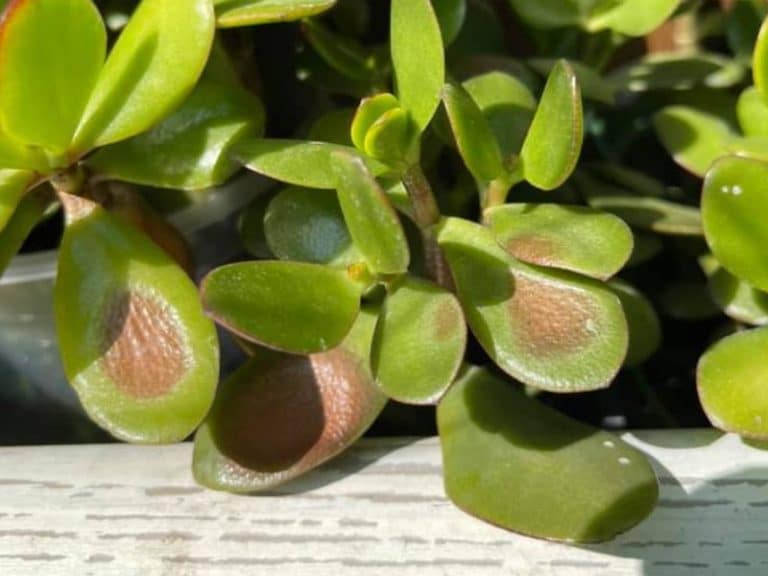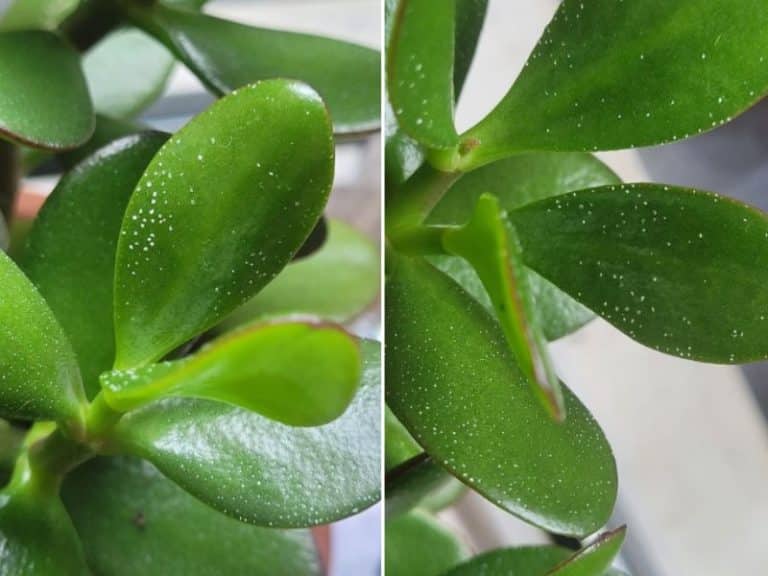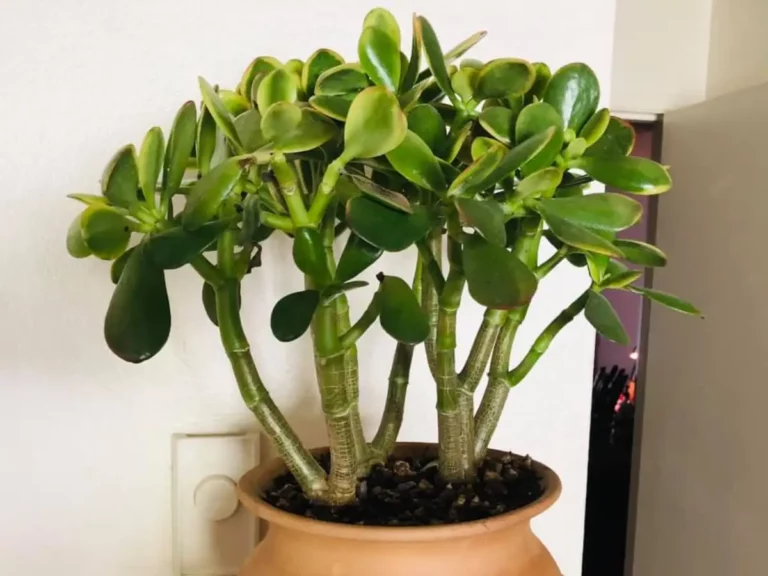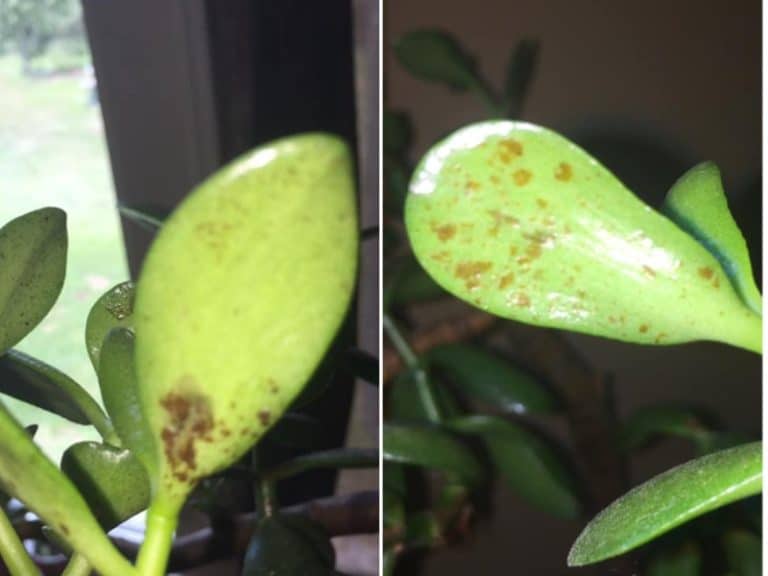When and How Often Does Jade Plant Bloom?
Due to their lustrous green leaves, jade plants (Crassula ovata) are popular as indoor and outdoor ornamental plants. However, many plant parents complain that their jade plants never produce any flowers. Is it a matter of patience, or is your jade plant doomed to zero blooming?
A jade plant takes three to four years to mature and blossom for the first time. It blooms from late winter to early spring. However, jade plants have irregular and infrequent blooms and might not bloom yearly.
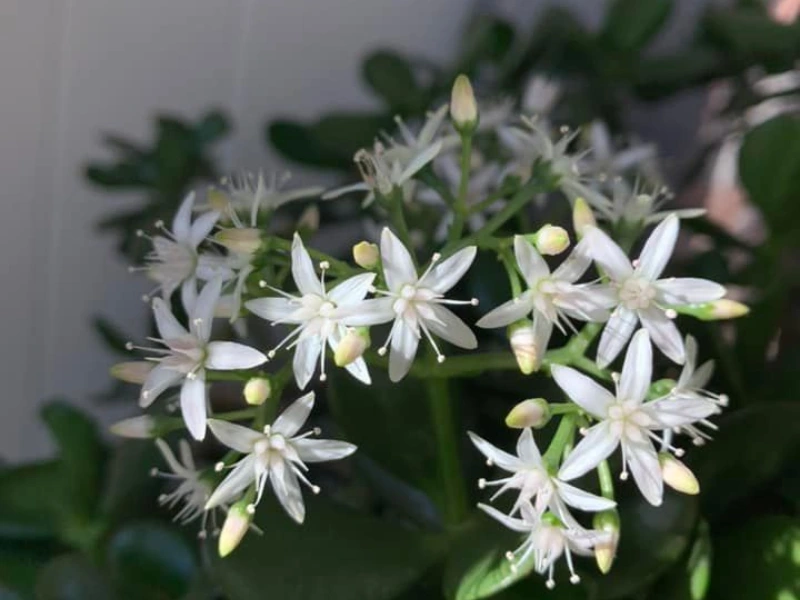
Jade plant flower colors
Depending on the variety, jade plant flowers are usually pink or white. These vivid colors contrast nicely with the dark green color of the foliage, creating a breathtaking spectacle. The flowers’ star shape adds to the plant’s visual allure.
Does a jade plant bloom?
Jade plants growing in the wild usually produce white or pink flowers upon maturity. However, those grown as houseplants rarely bloom since the amount of sunlight is inadequate.
A jade plant requires at least six hours of bright, uninterrupted sunlight daily to develop blossoms.
Flowers start as buds concealed inside pink sepals. Once the sepals open up, the blooms appear in dual or triple clusters. The flowers appear at the tips of the branches and have a very short lifespan.
Jade plants don’t bloom until they reach full maturity. It’s also worth noting that jade plants grown outside the plant’s USDA hardiness zones — zone 10 and zone 11— are unlikely to bloom, as the freezing winters in zones 1 to 9 hinder bud formation.
How often does a jade plant bloom?
Unlike most other houseplants that bloom at least once yearly, you can’t expect the same for a jade plant.
This succulent has an irregular blooming pattern and may fail to bloom in the subsequent season after producing flower clusters during the previous season. I’ve had a jade plant that only flowered after 9 years, so be patient with yours.
This can be attributed to jade plants requiring a long period to store enough energy to facilitate blooming. You can shorten this period if you want to see blooms by preventing pests and treating diseases such as root rot that’s common in jade plants.
When a jade plant blooms, it doesn’t retain the flowers for long. Also, it doesn’t need frequent blooming to reproduce.
How to make your jade plant bloom
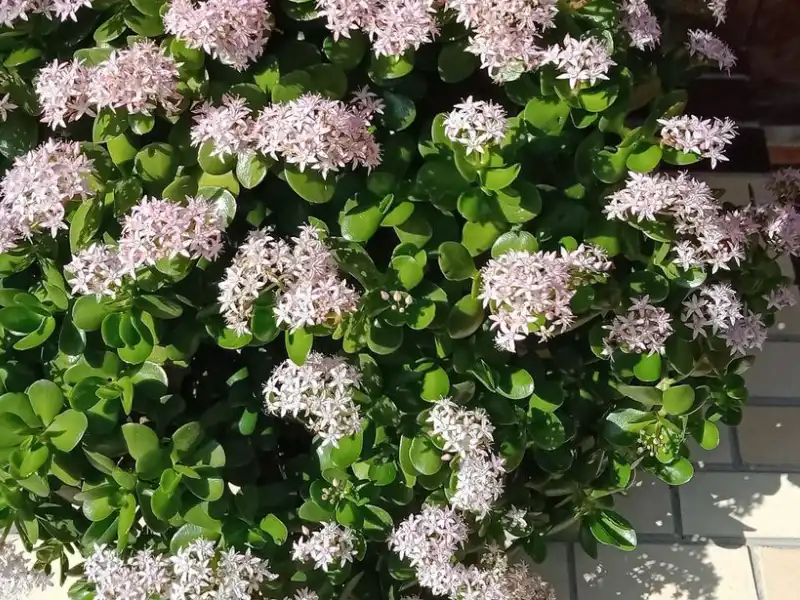
To encourage blooming in jade plants, you must mimic the plants’ ideal blooming conditions. These include adequate sunlight, optimal temperatures, a suitable location, the correct watering schedule, and optimal humidity.
Jade plants are likely to bloom in the wild. As a native plant of Mozambique and South Africa, It needs an environment with hot, sunny days, chilly nights, low humidity, and minimal water.
California would make an excellent outdoor setting for a jade plant.
Provide enough sunlight
A jade plant needs a minimum of six hours of direct sunlight exposure per day to bloom. Therefore, your jade plant is unlikely to bloom if it grows outdoors in a shaded spot. You have to relocate it to where it’ll receive direct, uninterrupted sunlight.
Be careful not to overexpose the plant to sunlight, as this can cause sunburns on the jade’s foliage.
Provide optimal temperature
Aim for a 55ºF-75ºF range.
To encourage blooming, expose your jade plant to the right temperature conditions of at least 55 degrees Fahrenheit starting from the fall. Jade plants produce flowers from late winter to early spring.
Also, expose the jade plant to cool nighttime temperatures. Jade plants can survive chilly winters if the temperatures don’t drop below 50ºF.
Provide the right humidity conditions
Even in outdoor settings, grouping different plants too close can increase the relative humidity around your jade plant, lowering the possibility of blooming.
As such, ensure yours is adequately spaced away from the rest of your garden plants. However, keep jade plants bunched close to each other. They are more likely to bloom if they share a common environment.
Flower bud formation is more likely to occur if the relative humidity around your jade plant is between 30% and 50%.
Move the plant to a proper location.
Although jade plants make excellent indoor plants, you might not witness them blooming.
If your mature jade plant is growing indoors, you may want to move it outdoors to improve the chances of blooming. Indoor conditions typically entail bright, filtered sunlight, which is great for developing new shoots, but not flowers.
A jade plant requires bright, unobstructed sunlight, available outdoors or in the wild, to flower.
And even if your indoor jade plant is placed next to a window sill that receives bright, unfiltered sunlight through a glass window, chances are still high that it won’t bloom due to the typically high humidity levels in indoor settings.
Stick to the correct watering schedule
To properly water your jade plant, ensure the soil dries out between successive watering sessions. Jade plants store water in their leaves and stems. Overwatering your jade plant exposes it to root rot. Weak and dying roots can’t take up the necessary nutrients to bloom.
During the winter season, reduce the watering frequency. This is because this plant enters a period of semi-dormancy during winter in preparation for bud formation.
As growth slows down significantly, the jade plant requires less water.
Pro tip: Shorter daytime hours in winter encourage blooming in jade plants. Overwatering interferes with the possibility of blooming. Also, due to the same reason, avoid fertilizing your money plant during this semi-dormancy period.
Speaking of fertilization…
Fertilize the jade plant wisely
While no specific fertilizer will encourage blooming in your jade plant, you can use fertilizer to strengthen your plant. However, you need to use a fertilizer with minimal nitrogen if you focus on blooming rather than foliage.
Phosphorus and potassium-rich fertilizer will give your jade plant strong roots and superior disease resistance.
Since jade plants are native to nutrient-deficient areas, a balanced 10-20-10 NPK fertilizer should be good enough. Most retailers stock fertilizers or plant food suited specifically for cacti and succulents.
Alternatively, you can go natural and use bonemeal and Epsom salts. Bonemeal is an excellent organic source of phosphorus. Add potash or banana peel pulp as an organic source of potassium. Maintain the 1:½:1 ratio.


